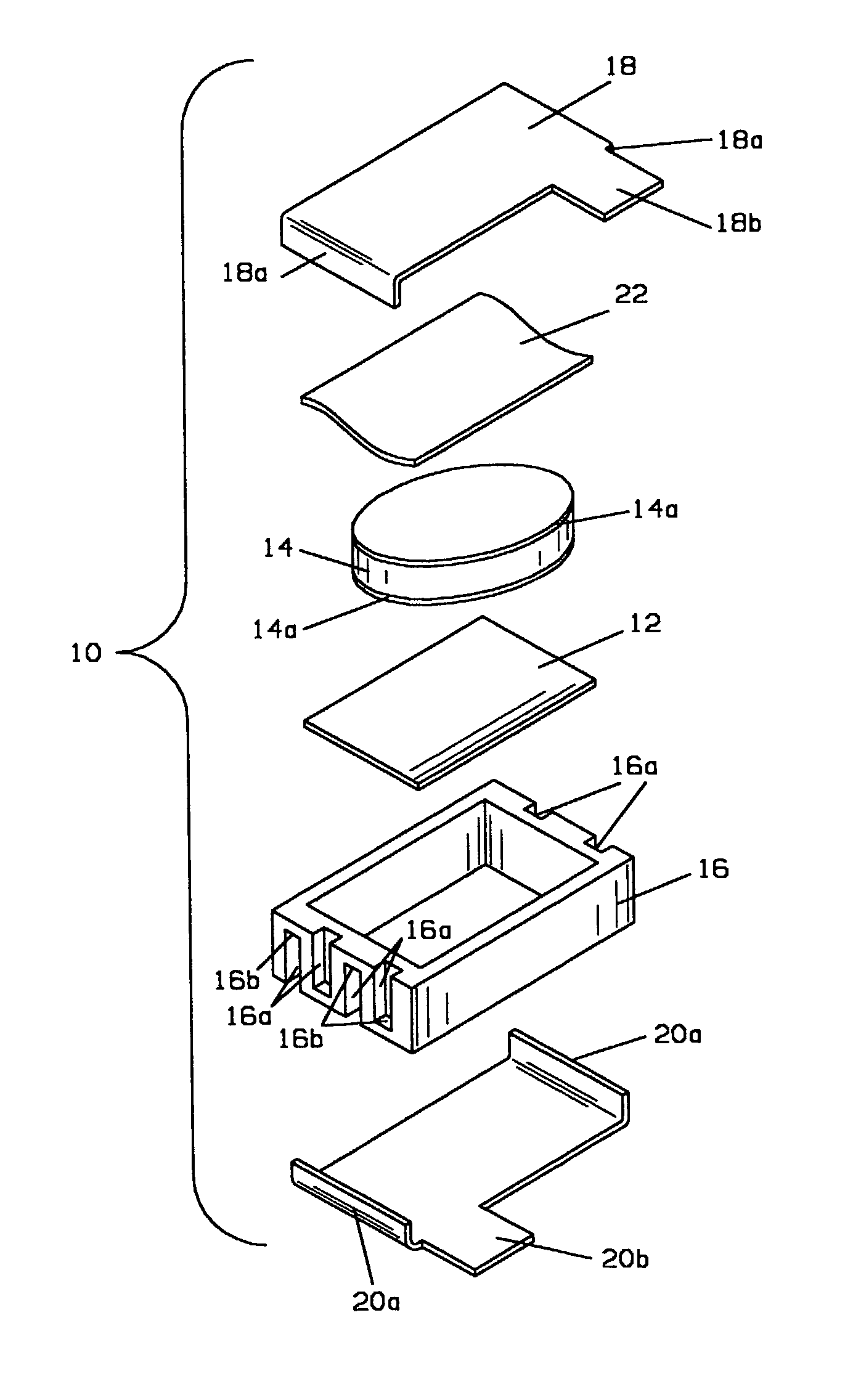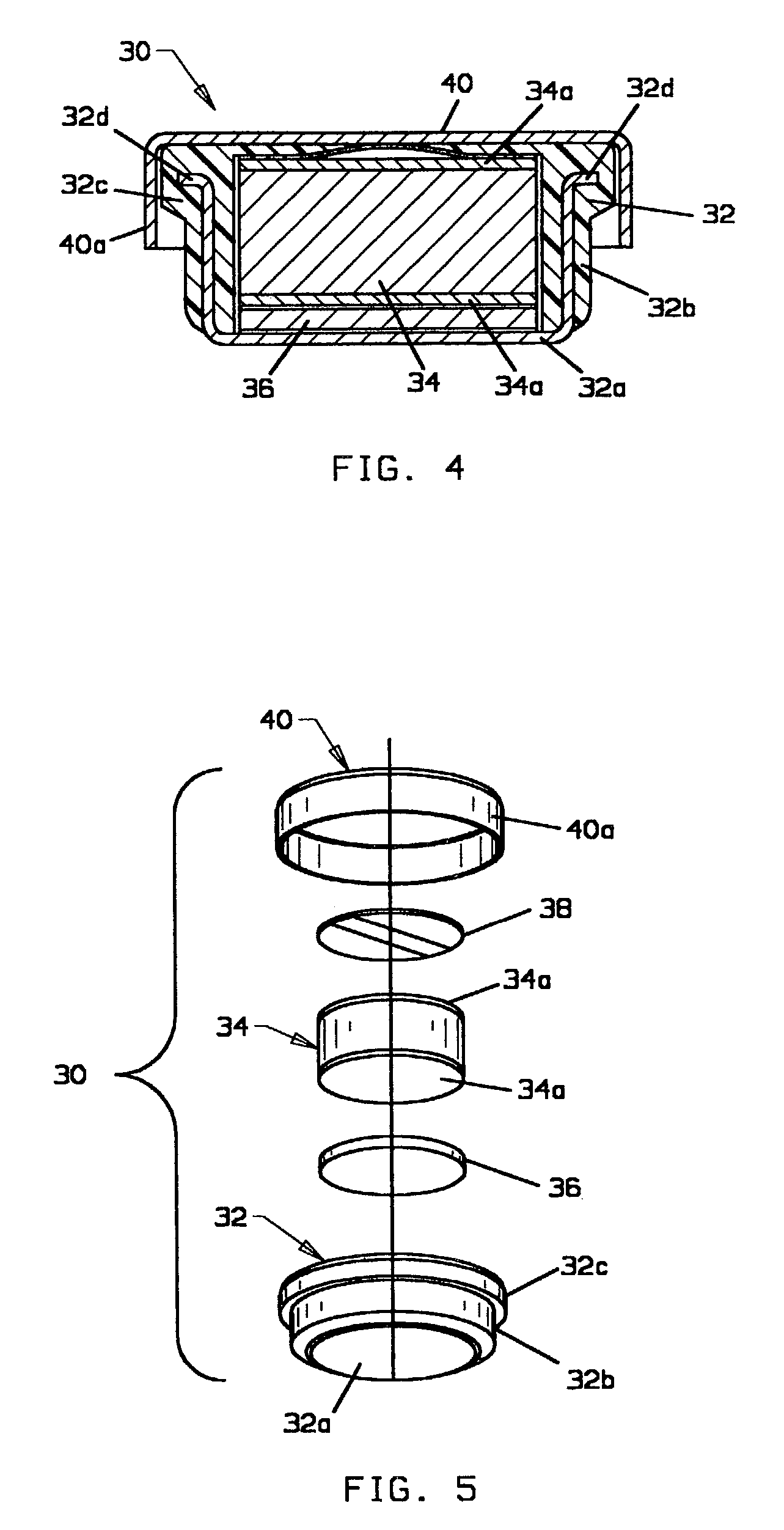Solid state motor protector
a solid-state motor and protector technology, applied in emergency protection circuit arrangements, dynamo-electric components, relays, etc., can solve the problems of tripping protectors nine times faster during overload conditions, nuisance trip issues, etc., to reduce the “rate of temperature rise” prolong the initial trip time, and remove the resistance of the ptc component.
- Summary
- Abstract
- Description
- Claims
- Application Information
AI Technical Summary
Benefits of technology
Problems solved by technology
Method used
Image
Examples
first embodiment
[0029]With reference to FIGS. 2 and 3, a motor protector 10 particularly useful with high voltage (e.g., 42 Vdc) automotive systems made in accordance with the invention, comprises a polymer PTC chip 12 having metal foil current collectors (not shown) on opposite face surfaces thereof electrically connected in series with a fixed resistance resistor 14 having contact surfaces 14a on opposite face surfaces thereof. A generally rectangular sidewall formed of electrically insulative material such as a thermoplastic polymer serves as an isolator 16 separating top and bottom terminal plates 18, 20, respectively, formed of suitable electrically conductive material such as nickel zinc plated steel. PTC chip 12, fixed resistor 14 and an electrically conductive spring 22 of steel, beryllium copper or other suitable material are aligned by the isolator and stacked between the terminals which are suitably attached to isolator 16 as by crimping sidewalls 18a, 20a, bending portions of the sidewa...
second embodiment
[0032]the invention is shown in FIGS. 4 and 5. Motor protector 30 is particularly useful for automotive applications employing small motors such as motors used for door locks. Motor protector 30 is a button cell type having an insert molded member 32 having a terminal portion 32a and a generally annular isolator portion 32b providing structural integrity to the package and an external electrical connection surface. A generally cylindrical fixed resistor 34 shown with suitable electrical contact surface 34a, generally cylindrical polymer PTC resistor element 36, having current collectors on opposed face surfaces but not separately shown for clarity of illustration, and a suitable electrically conductive spring member 38 are received within the cavity formed in insert molded member 32. An additional cup-shaped terminal 40 is received over the sub-assembly and crimped to the isolator portion 32b by bending the free distal end of sidewall 40a over the bottom surface of circumferential f...
PUM
 Login to View More
Login to View More Abstract
Description
Claims
Application Information
 Login to View More
Login to View More - R&D
- Intellectual Property
- Life Sciences
- Materials
- Tech Scout
- Unparalleled Data Quality
- Higher Quality Content
- 60% Fewer Hallucinations
Browse by: Latest US Patents, China's latest patents, Technical Efficacy Thesaurus, Application Domain, Technology Topic, Popular Technical Reports.
© 2025 PatSnap. All rights reserved.Legal|Privacy policy|Modern Slavery Act Transparency Statement|Sitemap|About US| Contact US: help@patsnap.com



